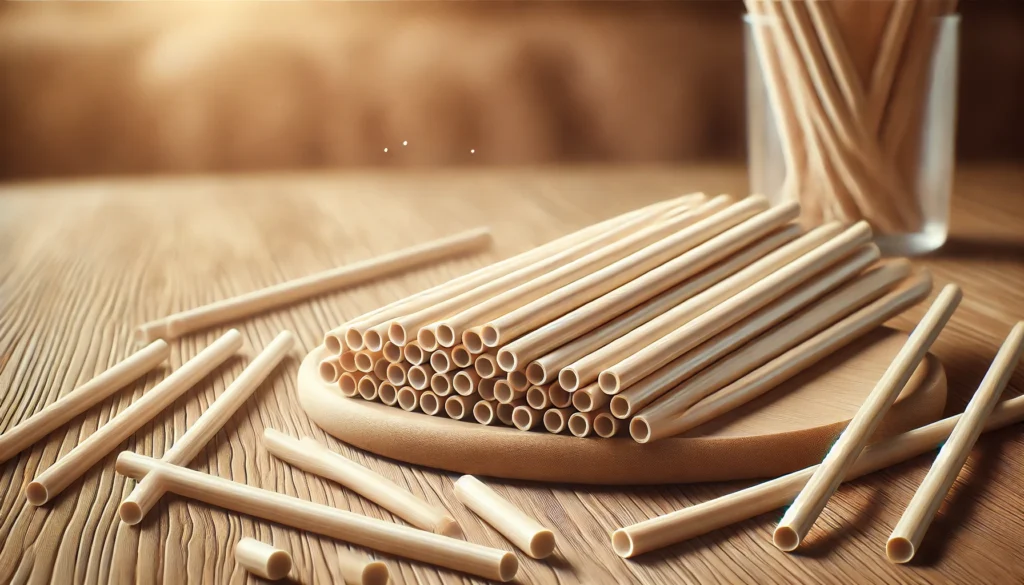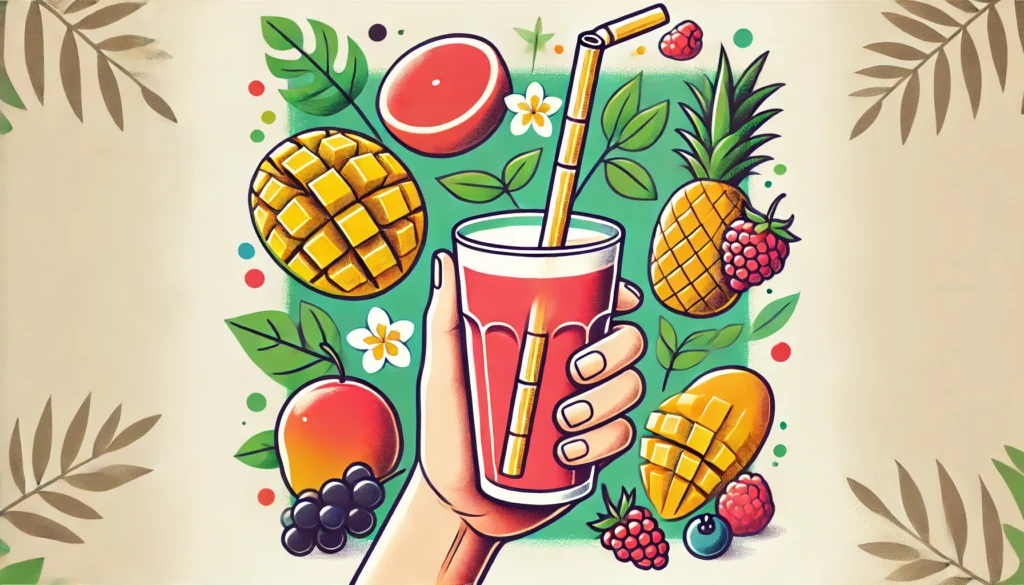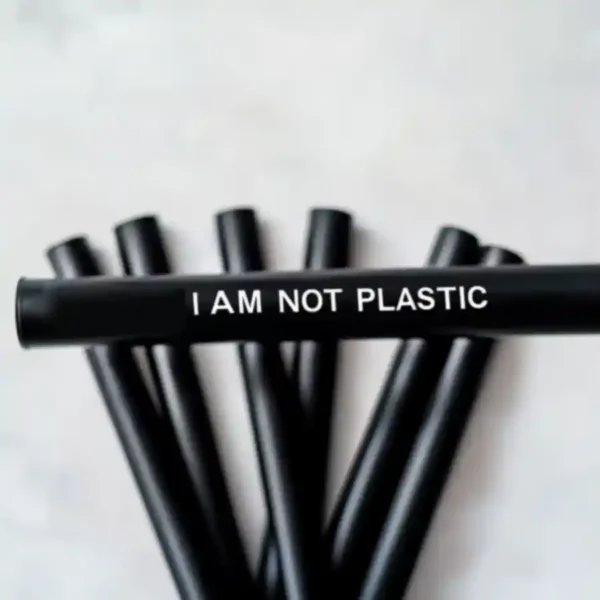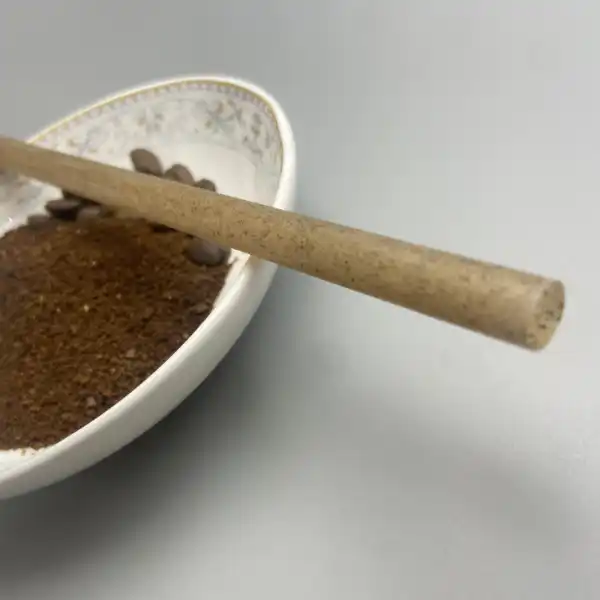Hey there! Welcome to the world of sustainable sipping! If you’ve ever been concerned about the environmental impact of plastic straws, you’re in the right place. We’re diving into one of the most exciting eco-friendly alternatives to plastic—আখের খড়. These little guys are making waves in the fight against plastic pollution, and they might just be the sustainable solution your business or daily routine needs.
In this blog, we’ll explore what makes sugarcane straws a fantastic alternative, why they’re gaining so much attention, and how you can join the movement toward more sustainable choices.

The Problem with Plastic Straws
Let’s start by talking about the elephant in the room: plastic straws. They’ve been a part of our daily lives for decades, but we’re finally waking up to the reality of their environmental toll. Each year, billions of plastic straws end up in our oceans and landfills. The worst part? They don’t break down easily. In fact, plastic straws can take up to 200 years to decompose!
We’ve all seen the heart-wrenching images of sea turtles tangled in plastic straws or marine life suffering because of single-use plastic. It’s a huge problem, and it’s one that’s only getting worse. That’s why many places around the world are taking action—banning plastic straws and pushing for eco-friendly alternatives.
Enter Sugarcane Straws
Now, imagine sipping your favorite drink without the guilt of contributing to plastic pollution. That’s where আখের খড় come in! They’re made from the fibrous residue of sugarcane (called bagasse) and are a biodegradable, eco-friendly alternative to plastic straws. Not only do they help reduce plastic waste, but they also come with some impressive benefits for both the environment and your business.

What Are Sugarcane Straws?
So, what exactly are sugarcane straws? In simple terms, they’re biodegradable straws made from bagasse, the fibrous leftover material that remains after extracting sugar from sugarcane stalks. Instead of throwing away this byproduct, it gets repurposed into straws, making sugarcane a renewable resource for sustainable production.
How Are They Made?
The production process for sugarcane straws is impressively simple:
- Harvesting Sugarcane: First, sugarcane is harvested from fields.
- Extracting the Juice: The sugarcane stalks are juiced to create sugar and molasses.
- Using Bagasse: After the juice is extracted, the remaining fiber (bagasse) is used to make straws.
- Shaping the Straws: The bagasse is processed, dried, and molded into straws.
- Packaging: Finally, the straws are packaged—often in eco-friendly materials, ready to be shipped.
Because bagasse is a byproduct of the sugar industry, there’s little additional environmental cost involved in its production. It’s all about recycling এবং repurposing।
The Benefits of Sugarcane Straws
Sugarcane straws are not just environmentally friendly; they offer a range of benefits that make them a superior alternative to plastic and paper straws. Let’s dive into the perks!
1। Environmentally Friendly
The environmental benefits are clear: sugarcane straws are biodegradable and compostable, unlike plastic straws that can linger in the environment for centuries. When disposed of in composting conditions, sugarcane straws break down in 90 to 180 days—far quicker than plastic. By choosing sugarcane over plastic, you’re making a tangible difference in the fight against plastic pollution.
2। Durability
Unlike paper straws, which tend to get soggy and collapse under pressure, sugarcane straws hold their structure for hours, making them perfect for a wide variety of drinks. Whether you’re sipping a smoothie, iced coffee, or cocktail, sugarcane straws won’t disintegrate halfway through your drink. They’re designed to withstand cold and hot beverages alike.
3। Heat Resistance
One of the standout features of sugarcane straws is their ability to handle hot drinks. Unlike paper straws that become flimsy in warm beverages, sugarcane straws retain their strength and integrity, even in steaming cups of coffee or tea.

4। Cost-Effective
You might assume that eco-friendly straws are more expensive than plastic, but that’s not always the case. While sugarcane straws might have a slightly higher initial cost than plastic straws, their durability and the fact that they’re compostable make them a cost-effective choice in the long run. Plus, buying them in bulk can significantly lower the price per unit.
5। Versatile and Customizable
Sugarcane straws are not just for coffee shops and restaurants. They’re perfect for every occasion. Whether you’re hosting a party, running a café, or operating a restaurant, sugarcane straws are an excellent option for eco-conscious businesses. Plus, many sugarcane straws are customizable—you can have your logo or branding printed directly on the straw, which is great for businesses looking to promote their eco-friendly image.
Sugarcane Straws vs Other Alternatives
When considering alternatives to plastic straws, sugarcane straws aren’t your only option. However, they stand out for their combination of durability, sustainability, and affordability. Let’s take a look at how they compare to other options like paper straws, প্লা স্ট্রস, and বাঁশের স্ট্রো।
Sugarcane Straws vs Paper Straws
- Durability: Sugarcane straws last longer and don’t get soggy like paper straws.
- Compostability: Both sugarcane and paper straws are biodegradable, but sugarcane straws break down faster and more effectively in composting environments.
- Taste: Unlike paper straws, which can impart a papery taste to your drink, sugarcane straws remain flavor-neutral.
Sugarcane Straws vs PLA Straws
- Production: PLA (polylactic acid) straws are made from corn or other plant starches, but they require industrial composting facilities to break down properly. In contrast, sugarcane straws break down in a home compost pile, making them more accessible for disposal.
- Cost: PLA straws are typically more expensive to produce than sugarcane straws.
Sugarcane Straws vs Bamboo Straws
- Material Sourcing: Bamboo is a great alternative, but it requires large-scale farming, which can contribute to deforestation and land-use issues. Sugarcane, on the other hand, is a byproduct of an existing industry (the sugar industry), so it uses waste material in an environmentally responsible way.
- Reusability: Bamboo straws are more likely to be reusable than sugarcane, which is typically single-use. However, sugarcane straws are compostable, meaning they won’t sit in landfills for years.

Sugarcane Straws in Action
Sugarcane straws are incredibly versatile. They can be used in a wide range of drinks, from smoothies to cocktails, and they provide a sustainable option for businesses in various industries. Whether you’re a café owner looking to reduce waste or a party host trying to make your event more eco-friendly, sugarcane straws can enhance your customer experience while helping you meet sustainability goals.
Real-Life Applications
- Cafés and Restaurants: By switching to sugarcane straws, cafés and restaurants can align with eco-conscious trends while offering customers a reliable, durable straw.
- Catering Events: Sugarcane straws are perfect for catering companies hosting events where sustainability matters.
- Home Use: As more consumers become aware of the environmental impact of single-use plastics, many are turning to sugarcane straws for use in their homes.
Customization for Businesses
Sugarcane straws are an excellent opportunity for businesses to customize their straws. Many companies now offer the option to print logos or branding on the straws, turning them into a marketing tool that showcases a company’s commitment to sustainability. Custom sugarcane straws are perfect for restaurants, bars, or cafés looking to promote their eco-friendly practices.
The California Plastic Straw Ban
The California plastic straw ban (AB 1884) has been a significant legislative move to curb the use of single-use plastic straws. This law restricts full-service restaurants and bars from automatically providing plastic straws to customers unless requested. Sugarcane straws are an ideal solution for businesses looking to comply with the ban while offering customers a sustainable alternative.
Benefits of Complying with the Ban
Switching to sugarcane straws doesn’t just help businesses stay compliant with laws like California’s ban on plastic straws. It also enhances the business’s reputation, attracting eco-conscious customers who care about the environment. Plus, adopting a sustainable practice can lead to long-term cost savings and help build a loyal customer base.
FAQs
- How long do sugarcane straws take to decompose?
- Sugarcane straws break down in composting environments within 90 to 180 days.
- Can sugarcane straws be used for hot drinks?
- Yes, sugarcane straws are heat-resistant and can be used for both hot and cold beverages.
- How durable are sugarcane straws compared to paper straws?
- Sugarcane straws are much more durable than paper straws, which tend to get soggy quickly.
- Are sugarcane straws safe for children?
- Yes, sugarcane straws are safe to use, free of harmful chemicals like BPA or PFAS.
- How do sugarcane straws compare to PLA straws?
- While both are biodegradable, PLA straws typically require industrial composting, whereas sugarcane straws decompose faster and don’t require industrial composting.
- Can sugarcane straws be customized for businesses?
- Yes, sugarcane straws can be branded with logos and used as a marketing tool to promote sustainability in businesses.
- What certifications should I look for when purchasing sugarcane straws?
- Look for certifications such as BPI (Biodegradable Products Institute) or DIN CERTCO to ensure the straws are genuinely compostable and meet environmental standards.
- Are sugarcane straws more expensive than plastic straws?
- While sugarcane straws can be more expensive than plastic straws, their long-term environmental benefits and durability often justify the cost.
উপসংহার
Making the switch to sugarcane straws is a simple yet impactful step toward a more sustainable future. Not only do these biodegradable straws reduce plastic pollution, but they also offer durability, cost-effectiveness, and environmental responsibility. Whether you’re a business owner or a consumer, adopting sugarcane straws is an easy way to make a positive impact.
Ready to ditch the plastic and embrace sustainability? It’s time to sip responsibly with sugarcane straws!






